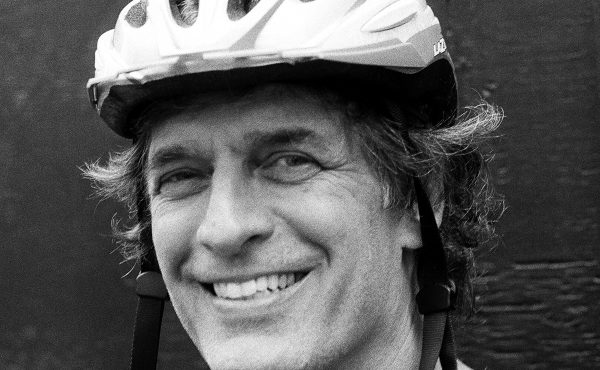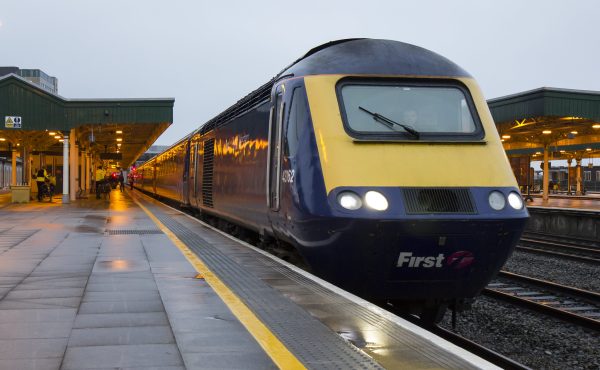
Here’s a short-term goal: With a little self-discipline, and a bit of focus on the part of the media, maybe we can get back to talking about the things that matter at City Hall, as opposed to the things that titillate and scandalize and polarize, which is to say, what everyone (including your’s truly) spent the summer obsessing over. But the crispness in the air should bring our thoughts back to the one conversation that must trump all the other phony wars that play out on the second floor of 100 Queen.
And of course, I’m talking about transit.
The season finale, you’ll recall, culminated with the ritual slaughter of the latest and greatest idea for solving Toronto’s transit woes. “One City,” the brainchild of TTC chair Karen Stintz and Scarborough councillor Glen de Baeremaeker, crumbled in June in the face of multiple obstacles. But council nevertheless voted to bring together the funding question and the transit planning question into one all-encompassing conversation, to begin this fall as Metrolinx begins its push for a funding strategy.
Yet as Stintz revealed last week in a Q&A with Spacing, even that idea appears to have vanished.
Spacing: What happens next on the transit file?
Stintz: There will be a report coming to Executive Committee [in October] recommending funding options for transit and that is something that is independent of the overall plan. Councillor de Baeraemaker and I are attempting to bring the two together but it appears that they won’t come together in the fall. There will be a discussion on how to fund transit, and then there will be a framework discussion on how to consult the public.
Spacing: What’s involved in the consultation?
Stintz: It will be a city-wide consultation process and [the City] will not be presenting a plan to the public to comment on. We will be seeking their input on the kind of plan they’d like to see.
Spacing: Why not present a proposal for people to comment on?
Stintz: That was the genesis of what Glen de Baeremaeker and I were hoping to achieve. We would not only bring together funding with the plan, but also bring forward a conceptual plan that would form the basis of the discussion with the public. Council was not willing to grapple with all of those issues at one time so those issues have now been parsed off. I believe we would have better public discussion if we actually had a proposed plan.
Spacing: How long with this consultation process last?
Stintz: My expectation is that it will begin in January and I believe that it needs to conclude in the spring. By the fall [of 2013], we do need to have an idea of where we want to go as a city.
Spacing: How will the city do the technical analysis? Will it happen simultaneously with the consultation?
Stintz: My objective and what I will be pushing is that we do that technical work and embed it within the official plan. The work-around [is] for what is our demand for transit and where in the city does it need to be, and then there are the specific EAs that have to get done. I do think the vision needs to include a more thorough analysis of where the demand is and what sort of transit do we need to meet the demand, and how are going to make sure it gets embedded in the official plan.
Spacing: How do you deal with the issue of prioritizing projects?
Stintz: Council needs to wrestle with those decisions and then we can begin to discuss with Metrolinx where the priorities are. We know Metrolinx is spending $8.4 billion on four light rail lines in Toronto and those projects are going to take us past 2022. So we have some time to sit down and talk about what the next phase of investment looks like. But we also know that Toronto needs to contribute, and we know that we can’t extend the Yonge subway line [to Richmond Hill] until we have a way to reduce the [demands] on the existing line. We need to be thinking about a downtown relief line before we even begin the discussion about extending the Yonge Street subway.
Spacing: What are the time horizons? Is there anything that would limit the duration of the consultation process so there is actually a target?
Stintz: I think council needs to set that time line. I believe if we’re going to be successful with the [Metrolinx’ proposed] funding model [due to be tabled next spring], it needs to be linked to something tangible. We need to be able to have those pieces in place and explain that vision to the public. We know the public wants it, because poll after poll after poll is showing that Torontonians and the Greater Toronto Area believe that traffic congestion and gridlock is the most important issue that we need to tackle. We need to be able to say, by 2013, 2014 at the latest, here’s the plan, here are the priorities within the plan, and here’s the way we’re going to fund it.
Spacing: What about the Queen’s Quay LRT? Will that go into the maw of this consultation or will you do that separately, with an eye to having it ready by the 2015 PanAm Games?
Stintz: That project has been deemed a priority by council. We know that project is moving forward, subject to funding. But I think from a long-term perspective of the city, we need to think about an overall plan. You can’t just look at projects. You have to think about an overall plan and fund an overall plan, and it has to be beyond four years or six years. It has to be a 30-year plan. But [the East Bayfront] will proceed independently of the consultation process.
Spacing: When would you like to see council make a funding decision for East Bayfront?
Stintz: We’re going to need to be taking that decision in the 2013 year, if we’re going to have it built.
Spacing: Is it feasible to build that LRT in time for the Games?
Stintz: It will be extremely challenging. I don’t want to say it can’t happen, but it will be extremely challenging.
Spacing: When is it too late?
Stintz: If we can’t get it in the 2013 capital budget, it’s not going to go.
photo by Danielle Scott





6 comments
I don’t have Councillor Stintz’ apparent faith that council’s deeming of QQE LRT a priority is going to survive Waterfront Toronto’s quickly diminishing interest in light rail in the early phases of development. Cherry and Queens Quay should have been integrated together and instead the former is going to turn tail at the rail corridor and the latter is going to be a busway. So much for transit led development, just the same old transit following development (maybe, if we feel like it) as has dogged the city elsewhere.
I agree that it is absurd to separate the netwark planning discussion from the funding discussion.
Otherwise the funding discussion becomes “Let’s pay a whole bunch of taxes for something that we’ll figure out later.”
Tough to get public support for that plan.
@ Mark: Waterfront Toronto have not diminished their interest in transit as far as I can tell. And why is their interest that seems to be the issue? Cherry was always going to short turn before the tracks, even when extending into the Portlands. Cherry to QQ was and never will be a TTC priority route. TTC have budget issues and cannot build what they promised so perhaps the finger should be pointed in that direction as well.
Much as I want to see the Queen’s Quay East LRT built as it will really be essential to ensure good development of the area south of the rail tracks from Yonge to Parliament (and will form phase 1 of a line that will eventually link to the Cherry Street spur and go into the Portlands) I am not clear on why there is any need for it to be built for the Pan-Am Games. Though the Athletes Village would be close to it, I do not think athletes will be taking the TTC to get to and from events and I understand the Cherry Street line (which will be built by then) is not even going to be in service until after the Games because the turning circle just north of the rail bridge cannot be built, because it is where the Village transit hub (buses) will be.
The One City plan had many flaws of which the worst was that it uncritically included everyone’s pet transit project in the map. That’s not planning. There were also some major errors in the cost estimates. If we’re going to put something before the public for comment, it should (a) include some degree of preliminary analysis and context, and (b) have a vaguely accurate cost estimate so that options can be intelligently compared.
Meanwhile, Stintz has been silent on the question of service quality, operating subsidies and fares. Time for the press to stop giving her a pass on that aspect of transit.
Finally, the waterfront planning has been badly screwed up both by the focus on the Pan Am Games (a flash in the pan in the timeframe of an overall plan), and by the TTC’s inability to see the eastern line as anything other than a Union Station feeder, hence the lack of interest in the Cherry connection.
Glad to see Stintz is turned around on the need for a DRL. TTC management wove many fables about why we didn’t need it and how we could instead spend billions to stuff a few more passengers on the existing Yonge line. Now if only we could figure out how to finance and build the DRL in less than three decades.
The extension of Cherry St south of the rail corridor should happen in the first phase precisely because widening the rail underpass will be expensive and cumbersome. By the time they do actually decide to do it in 5-10 years Metrolinx will be saying “well we’re running far more GO trains now so it’s not convenient to do that” and between a more limited construction window and construction inflation the cost is likely to be eye-watering if not outright prohibitive. If Cherry-QQE was being built as a combined project the land take at Parliament/Queens Quay and at Cherry north of the overpass would be unnecessary – instead those lands could be developed and a shared loop near the grain silos built instead. The current situation is that two streetcar projects are being planned to terminate 400 metres apart, which seems all sorts of dumb to me given the network advantages of connecting the two, but reflects the fact that TTC and Waterfront Toronto are not planning in a joined up way.